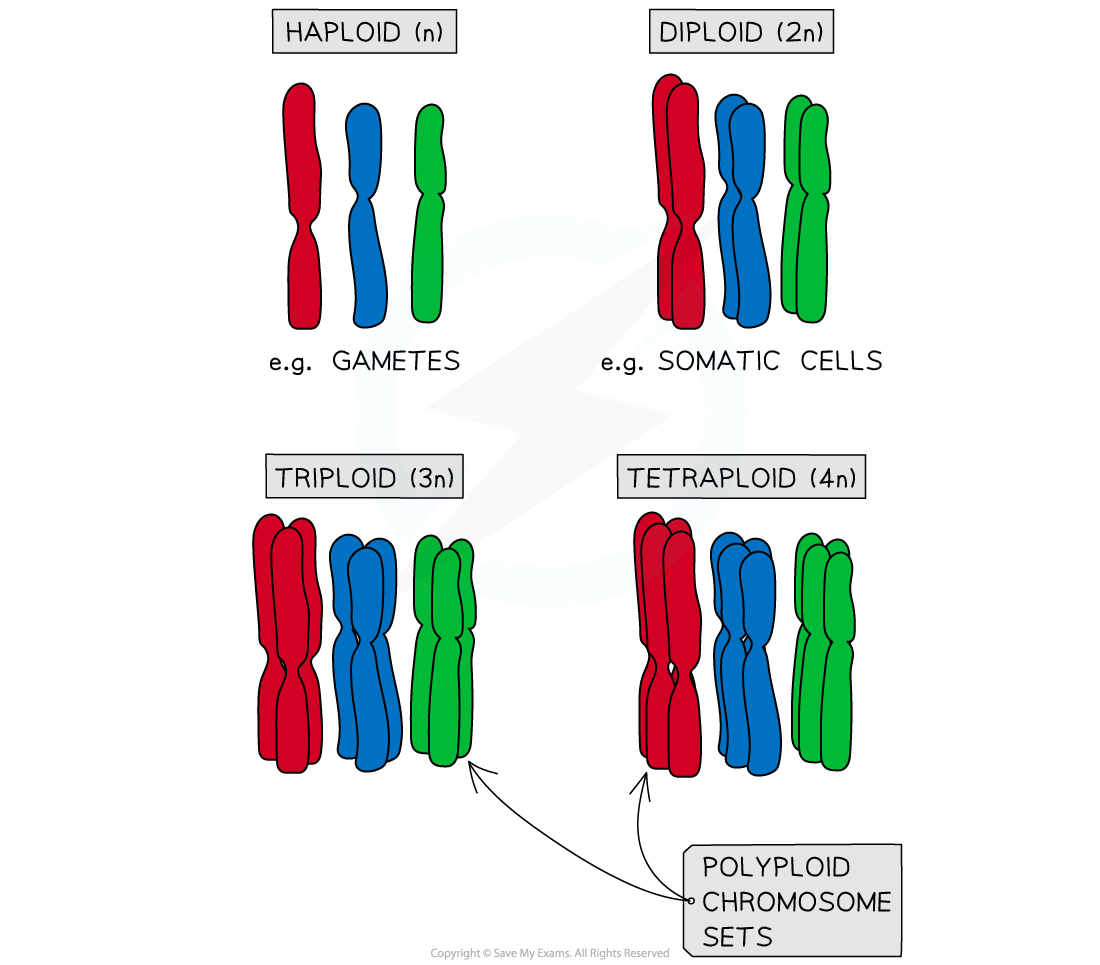Polyploidy & Speciation
NOS: Looking for patterns, trends and discrepancies—patterns of chromosome number in some genera can be explained by speciation due to polyploidy
- When patterns and trends are observed in nature, scientists seek to find explanations that fit with these observations
- When exceptions to accepted trends are observed in the natural world, it can sometimes mean that established modes of thinking are incorrect, so it is important to consider discrepancies carefully
Polyploidy
- So far, speciation has been explored in the context of mutations and changes to an organism's existing genome
- Where the number of chromosomes remains 2n or 2 x the haploid number, but the chromosomes' base sequences alter as new alleles form
- Speciation can also occur through polyploidy
- Polyploidy
- Occurs when an organism has more than two sets of homologous chromosomes
- Is more common in plants than in animals
- Can result from chromosomal mis-events eg. abnormalities in mitosis or more commonly, in meiosis
- For example, the fertilisation of an egg by more than one sperm, or by failure of chromosomes to separate in meiosis I
- A diploid gamete can be formed, which can fertilise with a haploid gamete and produce fertile offspring
- Polyploidy creates a separate taxonomic category within species, often called breeds or varieties
- Patterns in chromosome number between organisms (diploid, triploid, tetraploid etc) have been used to explain speciation
- Polyploidy can result in sympatric speciation as polyploid and diploid counterparts can coexist in the same geographical area

Chromosome sets showing haploid, diploid and polyploid sets
Uses of polyploidy
Application: Speciation in the genus Allium by polyploidy- Many crop species have been created to be polyploid
- For example, species in the Allium genus
- Such as onion, garlic, shallots, leeks and chives
- Allium porrum is the cultivated leek and is tetraploid and fertile, so has many advantages over non-polyploid counterparts
- For example, species in the Allium genus
- Wild onion (Allium canadense) has a diploid number of 2n = 14 although polyploid varieties have been generated with 2n = 28
- The common onion, (Allium cepa) has naturally-occurring polyploid varieties, some of which have been cultivated for agricultural use
- Polyploidy increases allelic diversity and permits novel phenotypes to be generated
- Having multiple copies of the same gene reduces the risk of recessive mutations causing detrimental effects
- Novel phenotypes can include improved flavour and aroma for cooking, a greater yield for farmers and improved pest resistance
- It also leads to hybrid vigour (the tendency of cross-bred individuals to show superior characteristics to those of their parents)
